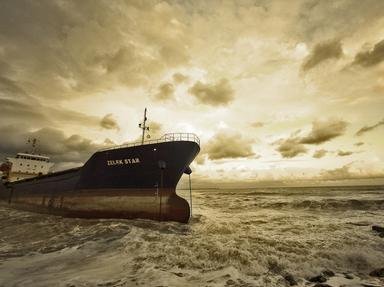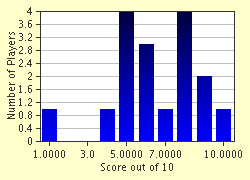Quiz Answer Key and Fun Facts
1. The Wydah was a fully rigged galley ship built to haul passengers, cargo, and slaves. It was commissioned in 1715 by Sir Humphrey Morice to ply the Triangle Trade. Ships generally took textiles and goods from Europe and traded them for slaves going to Americas. In the Americas, they traded the slaves, most often, for what agricultural products going back to Europe?
2. The Whydah started out from England to West Africa where it loaded up almost five hundred slaves. The trip, for the slaves leaving their home, was a horrific experience. The cramped conditions, illness, and shackles took their toll. Typically, what percentage of the slaves died during the journey?
3. The Whydah dropped off the slaves in the Americas and picked up gold, sugar, and rum to take back to England. The ship, captained by Lawrence Prince, was attacked near Cuba as it headed back. Which of these pirates, so named because he did not wear wigs but kept his long black hair tied back, was responsible for the capture?
4. By early April of 1717, the Whydah held a wide mixture of crew members and spoils from over fifty different pirate raids. The captain and crew also added an additional thirty cannon as ballast. What is ballast used for?
5. The Whydah was heading to Maine during the journey in April of 1717, but veered off course. Nobody knows why, but some say it was navigational error and others say it was the captain wanting to see family members. Either way, a storm hit just before the ship reached Cape Cod. What state would that be found?
6. Many people think that "Black Sam" Bellamy of the Whydah turned toward Cape Cod (specifically the village of Wellfleet) in order to visit his girlfriend. This lady, Maria Hallett, was left behind as he searched for treasure. What Bellamy did not realize is that she was with child and was shunned by her peers after he left. As insanity set in during her predicament, what was she called?
7. On April 26 of 1716, the Whydah was caught in 70 mile-per-hour winds and 30-foot high seas. She and her sister ship both broke apart on sandbars and split open, spilling everything into the water. The next morning at least 100 corpses littered the beach. Cyprian Southack, a cartographer, was sent to bury the bodies, report on things, and salvage material. What does a cartographer work with?
8. In 1865, the person who authored 'Walden Pond' wrote a book called 'Cape Cod'. In it, the author wrote about the waters in the area and included descriptions of sunken anchors and treasures. This author's book aided in a group finding the shipwreck of the Whydah over 120 years later. Who is the author?
9. Barry Clifford found the wreck of the Whydah in 1984 by relying on word of mouth, research, and old maps. Surprisingly, it was in just fourteen feet of water and five feet of mud. One major find gave the whole thing a 'ring' of truth to the expedition. It was inscribed 'The Whydah Galley 1716'. Its finding allowed this to become the first pirate shipwreck with its identity authenticated. What was it?
10. The articles found at the Whydah wreckage site helped formulate new ideas about pirates in the 1700s. After studying the various relics, scientists have changed some theories about the 'traditional' pirate image. Which of these are true?
Source: Author
stephgm67
This quiz was reviewed by FunTrivia editor
trident before going online.
Any errors found in FunTrivia content are routinely corrected through our feedback system.

